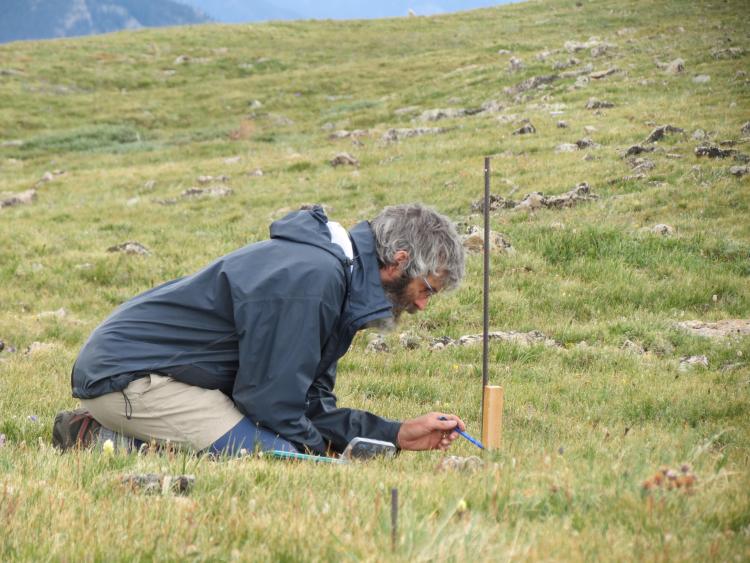The University of Colorado Boulder has hired its first Colorado Chair in Environmental Studies, an endowed chair awarded to Daniel Doak, a conservation biologist known for his quantitative analysis of how different government policies could affect the populations of species ranging from sea otters, California condors, corals and rare plants.
The endowed chair in environmental studies was made possible by $4 million in gifts made anonymously in 2009 and 2010 toward the chair.
Sharon Collinge, professor and director of the CU-Boulder Environmental Studies Program, called Doak a perfect match. “He epitomizes what we’re looking for,” she said.
Doak is especially skilled in interdisciplinary research, she said. He brings expertise in policy to his analyses of risks of energy development, for example. And he is widely cited for his research in quantitative conservation biology, which combines sophisticated computer modeling with varying policy scenarios to project changes in populations of rare species.
For instance, the Proceedings of the National Academies of Science recently published a study co-authored by Doak concluding that the California condor is chronically endangered by lead exposure from hunters’ spent ammunition.
While the free-flying condor population has risen in the last three decades, that increase has been achieved through captive breeding, monitoring and veterinary care, the study found. Meanwhile, the primary threat to the endangered bird -- lead poisoning from bullets and shotgun shells lodged in carrion -- has gone largely unmitigated, the study said.
Doak and his fellow researchers found no evidence that California’s 2008 partial ban on lead ammunition yielded any decrease in lead exposure and poisoning in condors.
Since 2007, Doak has served as a professor of zoology and physiology at the University of Wyoming. Previously, he was a faculty member at the University of California, Santa Cruz. His research has been funded by the National Science Foundation, U.S. Fish and Wildlife Service, U.S. Forest Service, California Department of Fish and Game and the U.S. Bureau of Land Management. Scholarly papers have cited his work more than 3,000 times since 1998.
Doak said he was drawn to CU-Boulder’s Environmental Studies Program because of its breadth, spanning disciplines ranging from biogeochemistry to political science to philosophy. This interdisciplinary focus is necessary to confront some of the world’s most intractable problems, Doak and Collinge said.
“That’s the only way we can really address and resolve some of the major environmental challenges that we face,” Collinge said.
Working with experts from a wide range of disciplines, Doak added, provides a motivation and opportunity “not once a year but every day to confront your own ignorance and thus to appreciate and learn new ideas and approaches.”
It is not that interdisciplinary work is always best, he added. “We need to train ourselves and our students to determine when the problem we are confronting requires an interdisciplinary approach. If you want to build a bridge that won’t fall down, you don’t need an interdisciplinary team. You need a good engineer.”
The critical question, he said, is the following: “Is this problem a nail that requires a hammer, or is this a problem that requires a lot of tools? And most environmental problems require an entire chest of tools and the different people who know how to use them.”
Collinge said students sometimes grasp this distinction better than professors do. “Students who are interested in the environment understand very deeply that they have to know something about politics and policies and how we make choices and why we make choices,” she said. “They’ve essentially pushed us, encouraged us to provide that broad and deep training for them.”
Of the donor’s gift, Collinge said, “This was incredibly generous. And we are really grateful.
“For me, it validates or speaks to the importance of what we’re doing,” she said. “With more than 1,000 undergraduate majors in environmental studies and 50 graduate students, enthusiasm was abundant even before the gift that enabled the endowed chair.”
Contact:
Sharon Collinge, 303-735-3242
sharon.collinge@colorado.edu
Daniel Doak
daniel.doak@colorado.edu
Clint Talbott, 303-492-6111


